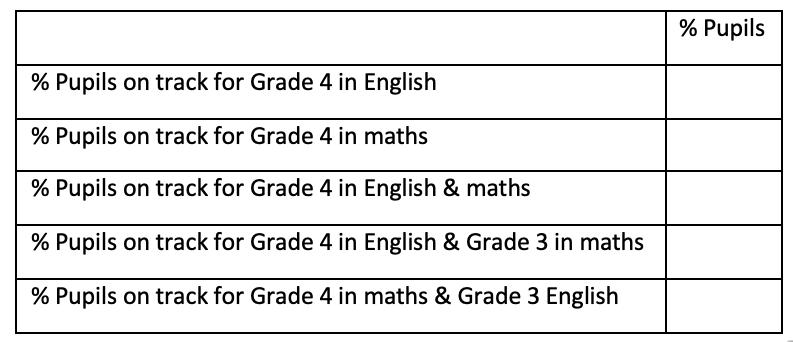
5 minute read
Sirius Academy North’s Plan
from Trust Strategic Plan
by npeacock_SAN
1. To improve GCSE outcomes and the progress pupils make from KS2 to KS4
Success Criteria
40% of pupils to achieve a grade 5 or above in GCSE English & maths in 2024
Evidence from Data
Autumn Term 1 – 2023
Commentary
• 2022 saw our highest level of attainment across subject and Academy and subject measures, with the exception of MFL and IT & Business subjects.
• The predictions show that this trend is set to continue in 2023.
• This is despite a fall in attainment on entry as well as disruption due to the pandemic
Success Criteria
60% of pupils to achieve a grade 4 or above in GCSE English & maths
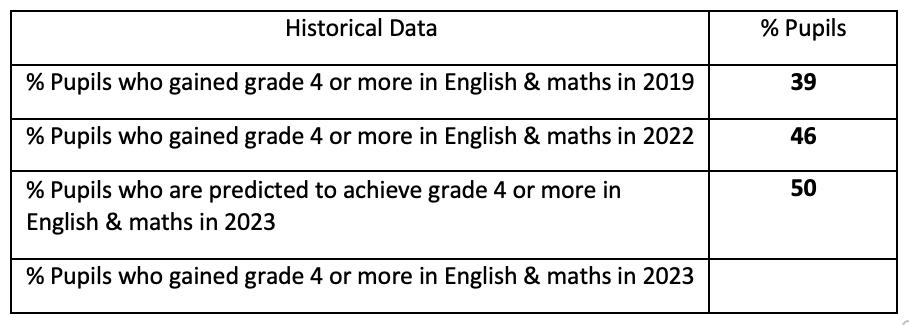
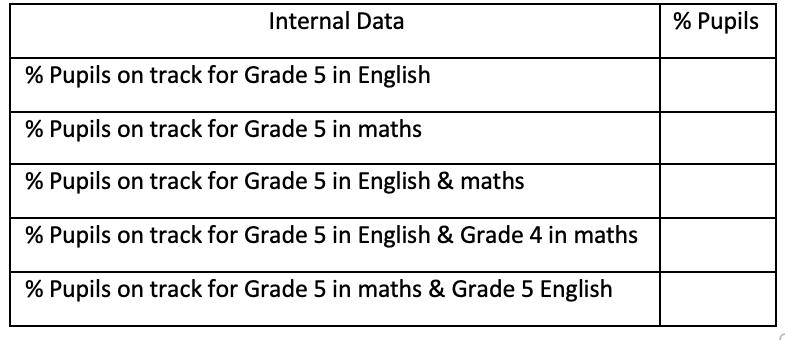
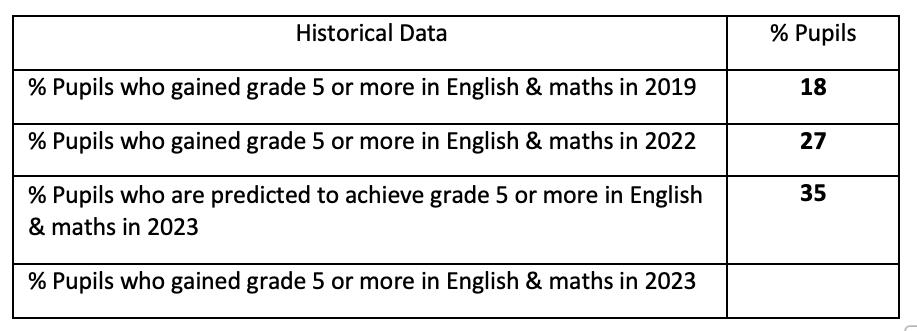
Autumn Term 1 – 2023
Evidence from Data
Commentary
• This trend in 4+ crossover (and across subjects) is upwards.
• Due to the level of EAL migration and attainment on entry 4+ is problematic due to the number of students who need to be supported at a lower level e.g. to learn English.
Success Criteria
12% of pupils to achieve the EBacc at 5+
Evidence from Data
Autumn Term 1 – 2023
Commentary
• Despite the increases between 2019 and 2022, the results in MFL are the current limiting factor in the growth of EBACC results. This is reflected in current projections in 5+
• The Academy is consistently around national average for EBACC entry
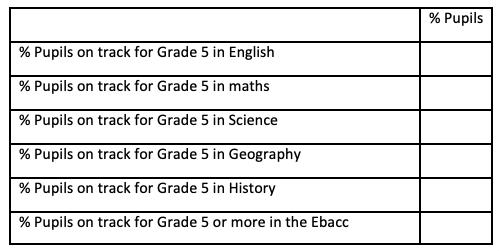
Success Criteria
40% of Pupil Premium pupils to achieve a grade 5 or above in GCSE English & maths
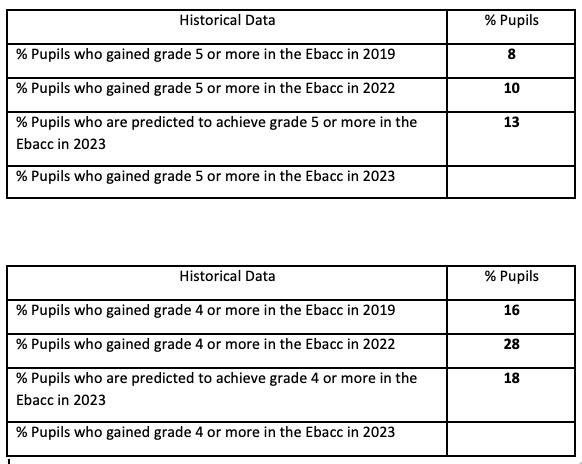
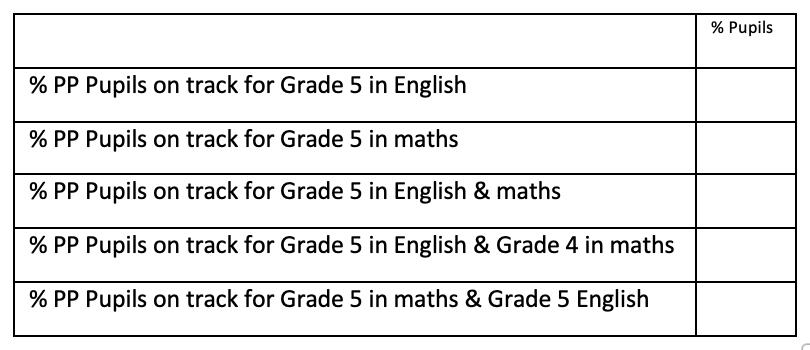
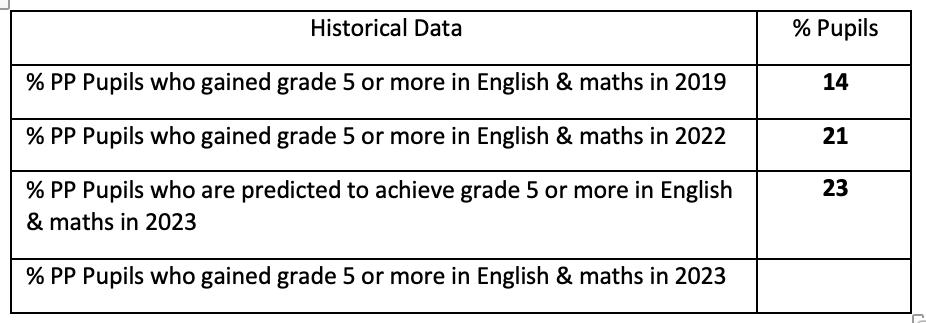
Evidence from Data
Autumn Term 1 – 2023
Commentary
• The gap between PP and their peers remains stubborn despite an increase in the percentage achieving 5+ crossover between 2019 and 2022.
• The level of PP at the Academy is increasing from a high baseline.
Success Criteria
60% of Pupil Premium pupils to achieve a grade 4 or above in GCSE English & maths
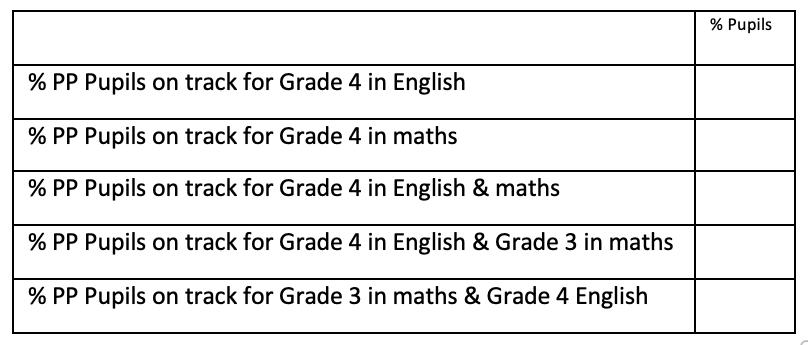
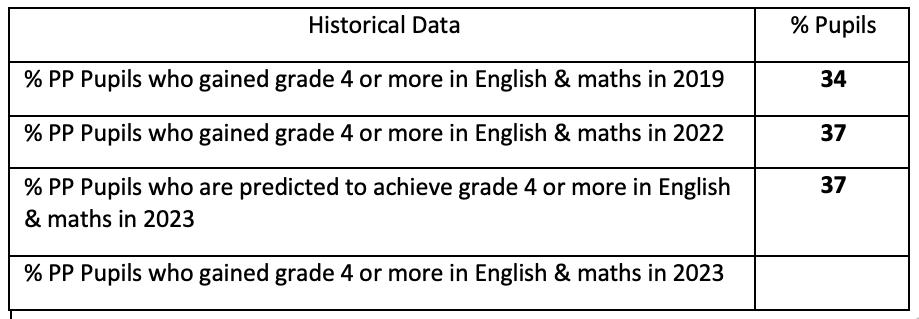
Autumn Term 1 - 2023
Evidence from Data
Commentary
• The gap between PP and their peers remains stubborn despite an increase in the percentage achieving 4+ crossover between 2019 and 2022.
Success Criteria
25% of Pupil Premium pupils to achieve the EBacc
Autumn Term 1 - 2023
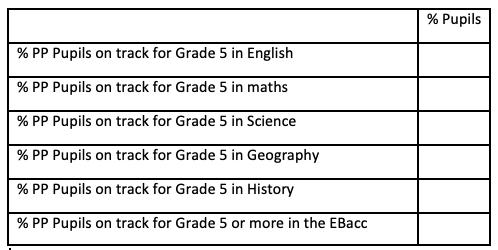
Evidence from Data
Commentary
• As per general EBACC performance, MFL is currently the limiting factor for EBACC increases. While there was an increase between 2019 and 2022, this is not projected to continue in 2023.
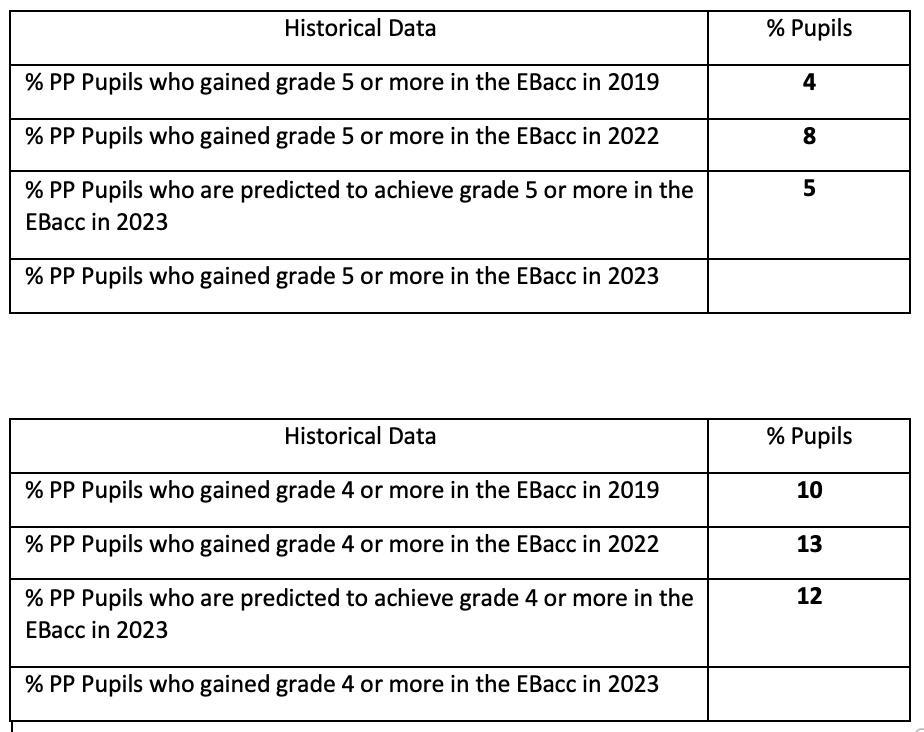
Success Criteria
0% of pupils with Low Prior Attainment (LA) to achieve a grade 5 or above in GCSE English & maths (via FFT 20)
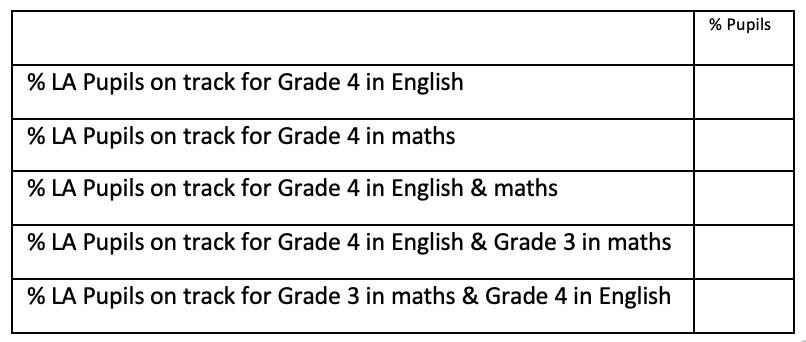
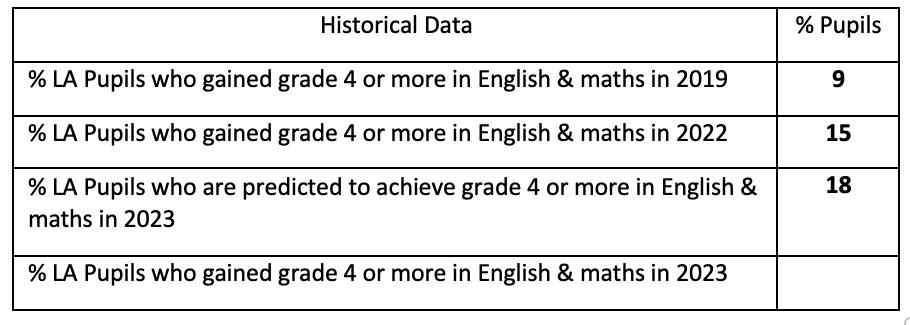
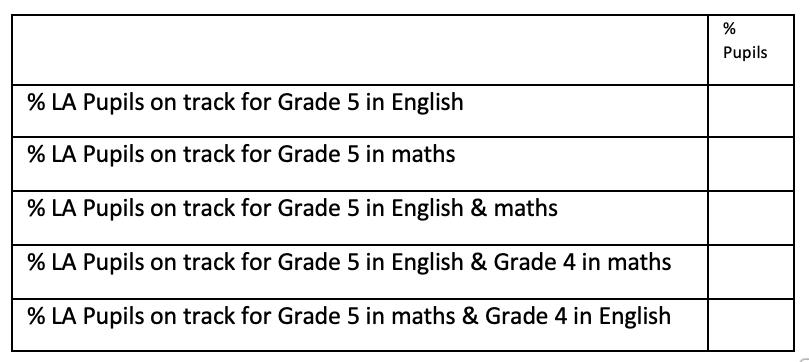
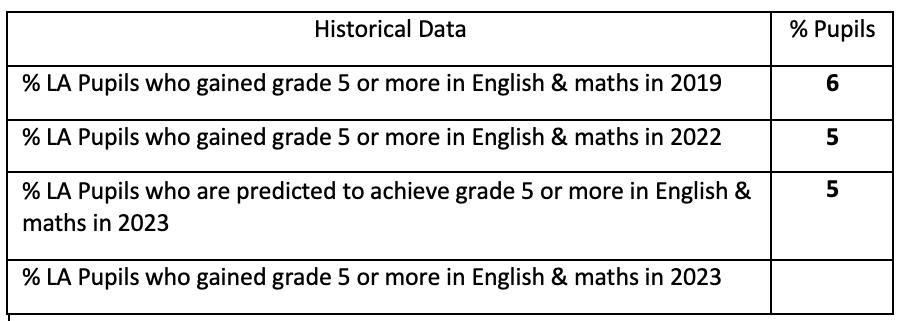
Evidence from Data
Autumn Term 1 - 2023
Commentary
• Despite FFT 20 consistently predicting 0% at 5+ (or 4+) LA students do achieve crossover at 5+. Historically, the Academy as performed well with LA students.
Success Criteria
0% of pupils with Low Prior Attainment (LA) to achieve a grade 4 or above in GCSE English & maths (via FFT 20)
Evidence from Data
Autumn Term 1 - 2023
Commentary
• Despite FFT 20 consistently predicting 0% at 4+ LA students do achieve crossover at 5+. Historically, the Academy as performed well with LA students.
• Currently, nearly 1 in 5 lower prior attaining students are projected to achieve crossover at 4+, a growing trend.
Success Criteria
0% of pupils with Low Prior Attainment to achieve the EBacc (via FFT 20)
Autumn Term 1 – 2023
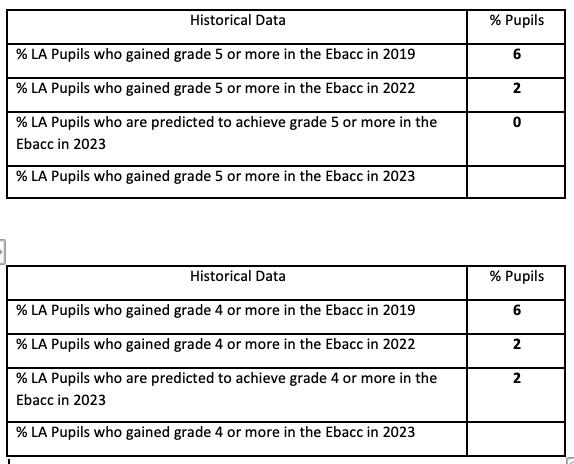
Evidence from Data
Commentary
• Though options are available to all, the lower take up of MFL for lower prior attaining students means that the results are based upon low numbers.
Success Criteria
96% of High Prior Attainment (HA) pupils to achieve a grade 5 or above in GCSE English & maths (via FFT 20)
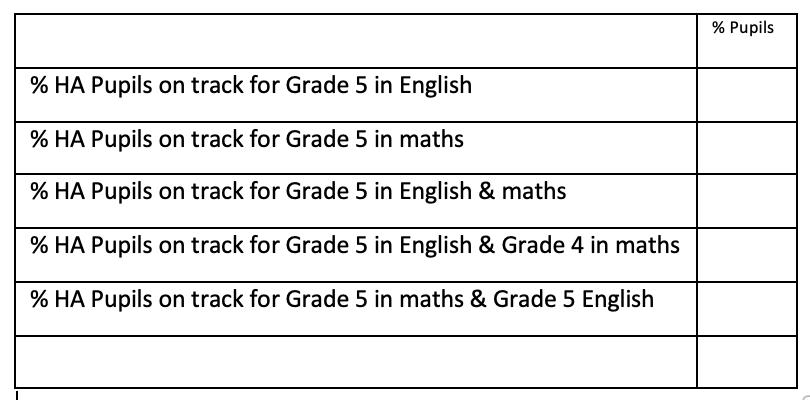
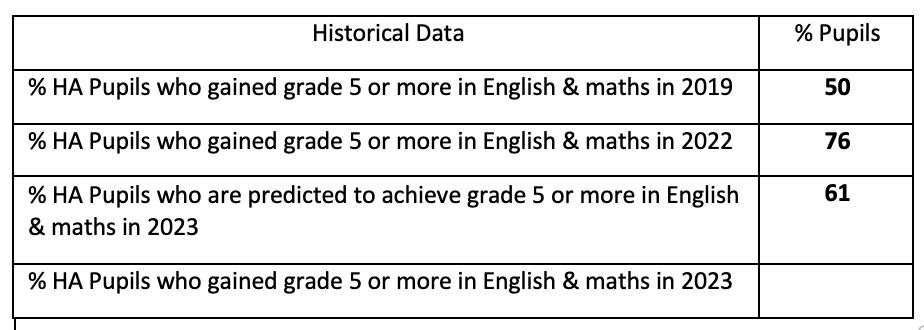
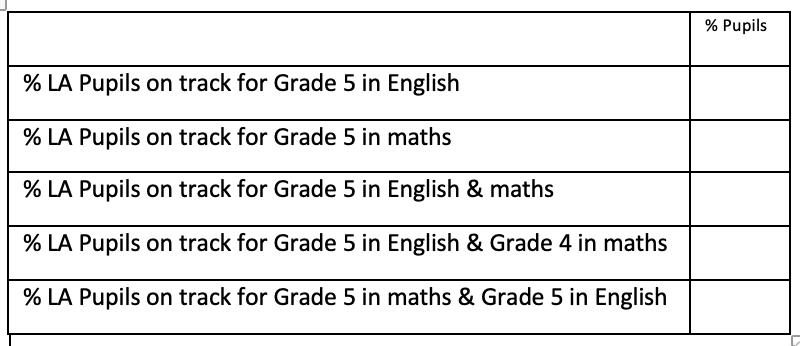
Evidence from Data
Autumn Term 1 - 2023
Commentary
• Historically, the Academy have performed comparatively less well with higher prior attaining students
• However, the low numbers of HA students reduce the statistical significance. (There were 36 in 2022)
• The trend is upwards between 2019 and 2022, however, there remains work to do in 2023.
Success Criteria
96% of High Prior Attainment (HA) pupils to achieve the EBacc (via FFT 20)
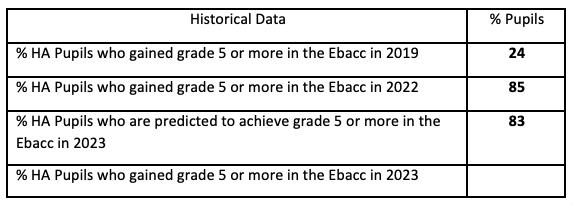
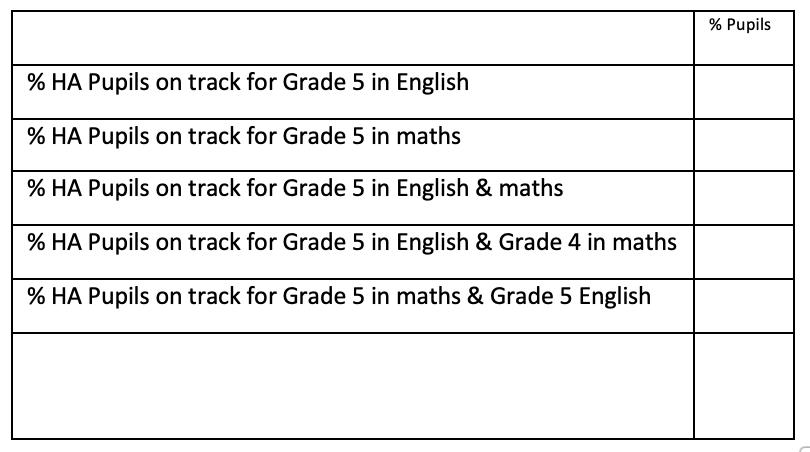
Autumn Term 1 – 2023
Evidence from Data
Commentary
• There was a rapid increase in those achieving EBACC amongst higher attaining students between 2019 and 2022.
• This is projected to stabilise in 2023.
2. To improve the attendance of pupils to be in-line or above the national average
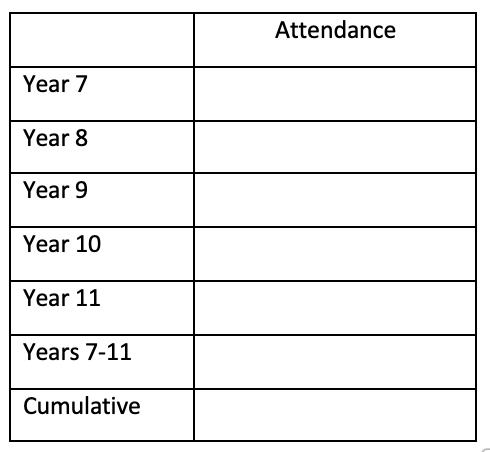
Success Criteria
To improve attendance of pupils from 87% in 2022/2023 to 93%* or more in 2023/2024
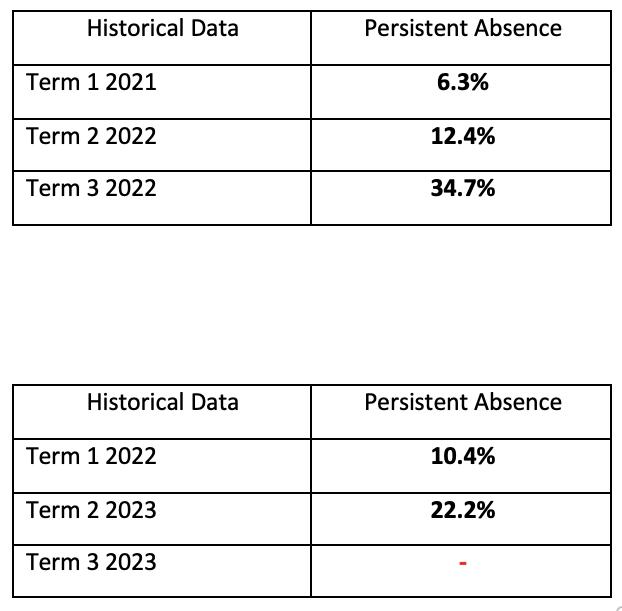
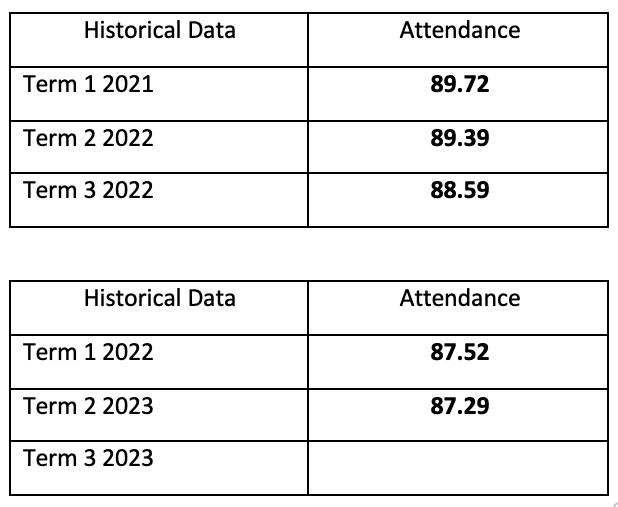
Evidence from Data
Autumn Term 1 - 2023
Commentary
• Attendance has not returned to pre-pandemic levels and remains a significant challenge
• Despite the overall figures, we are confident that all measures are being taken and peer networks used to constantly review the effectiveness of attendance strategy.
Success Criteria
To reduce the number of pupils who are persistent absentees
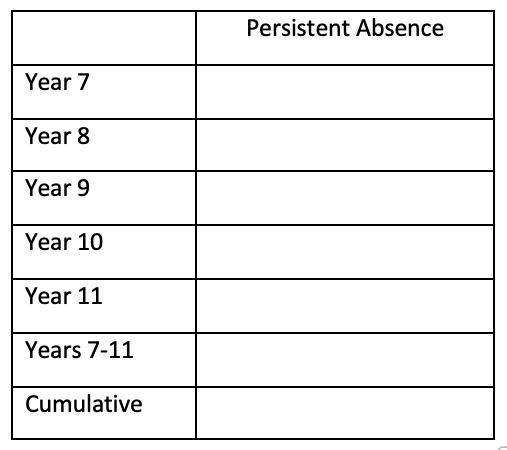
Autumn Term 1 – 2023
Evidence from Data
Commentary
• The overall attendance issue is compounded by the increased levels of severe persistent absence.
• Like attendance, persistent absenteeism has not returned to the national average, pre-pandemic levels
3. To improve the behaviour of pupils who challenge the academy’s ethos
Success Criteria
Reduce the number of pupils suspended from the academy Autumn Term 1 - 2023
Evidence from Data
Commentary
• Fixed-term suspension are high, though permanent exclusions are low.
• Changes in approach to address key areas such as verbal abuse and persistent defiance have resulted in higher suspension though this is now beginning to fall.
• Despite increasing suspensions, the average length of suspension is falling, therefore there is less time with disrupted learning.
• Beyond, persistent defiance, suspensions for higher order incidents such as violent incidents continue to fall.
Success Criteria
Reduce the number of pupils who have repeated suspensions from the academy, Autumn Term 1 – 2023
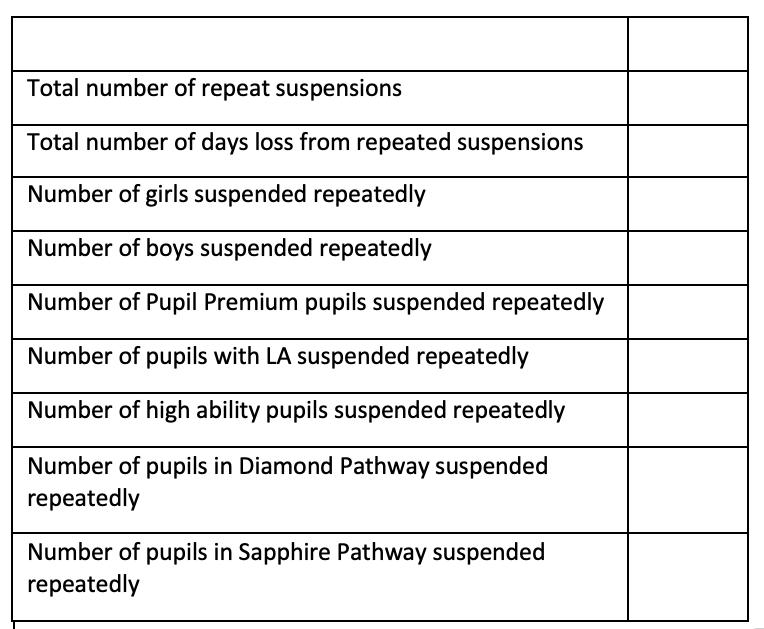

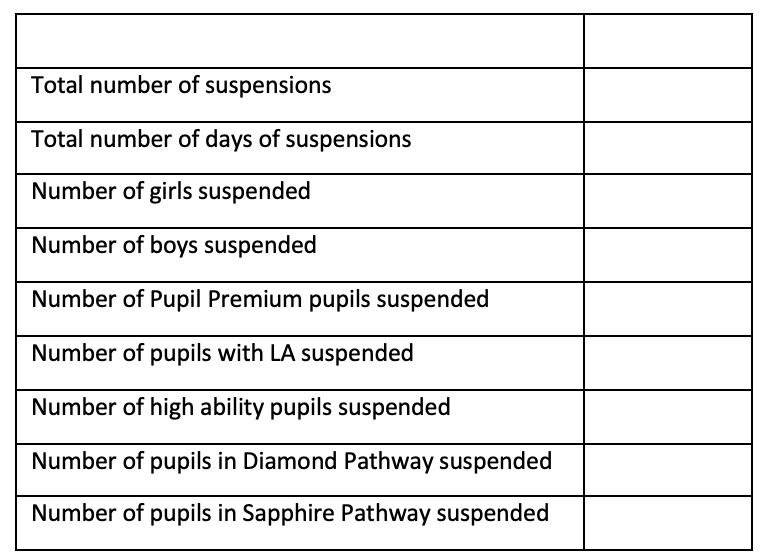
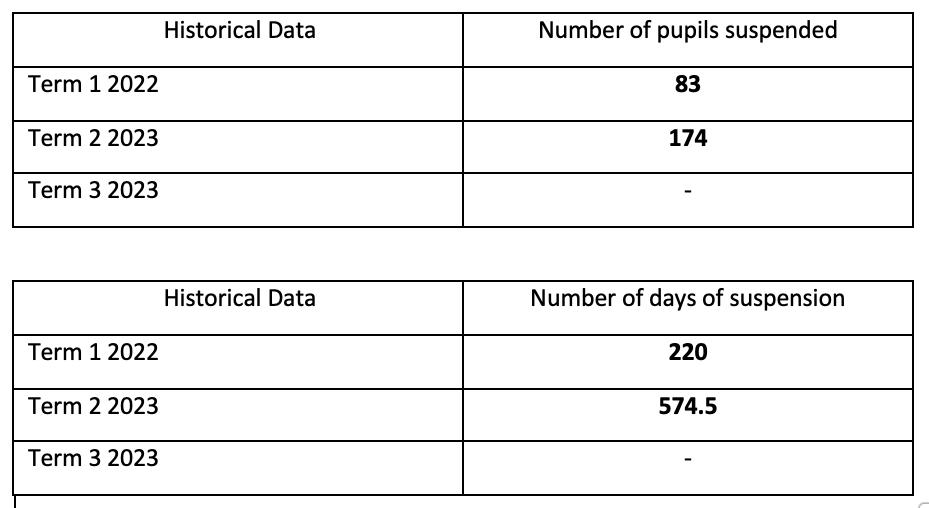
Evidence from Data
Commentary
• The number of students suspended is also high, though case study evidence shows how individuals are supported to reduce suspensions through individual support and Academy pathways
• The high number of suspensions, are a combination of high expectations as well as the high level of challenge within the context of the Academy. For example, students may join the Academy and initially struggle due to a history of challenging behaviour, however they are supported to reduce suspensions over time.
• Often, multiple suspensions may happen over a short space of time with Academy strategies reducing suspensions over time.
Success Criteria
Reduce the number of pupils who are dual registered in AP at Rise Academy from 55 in 2022/2023 to <30 in 2023/2024
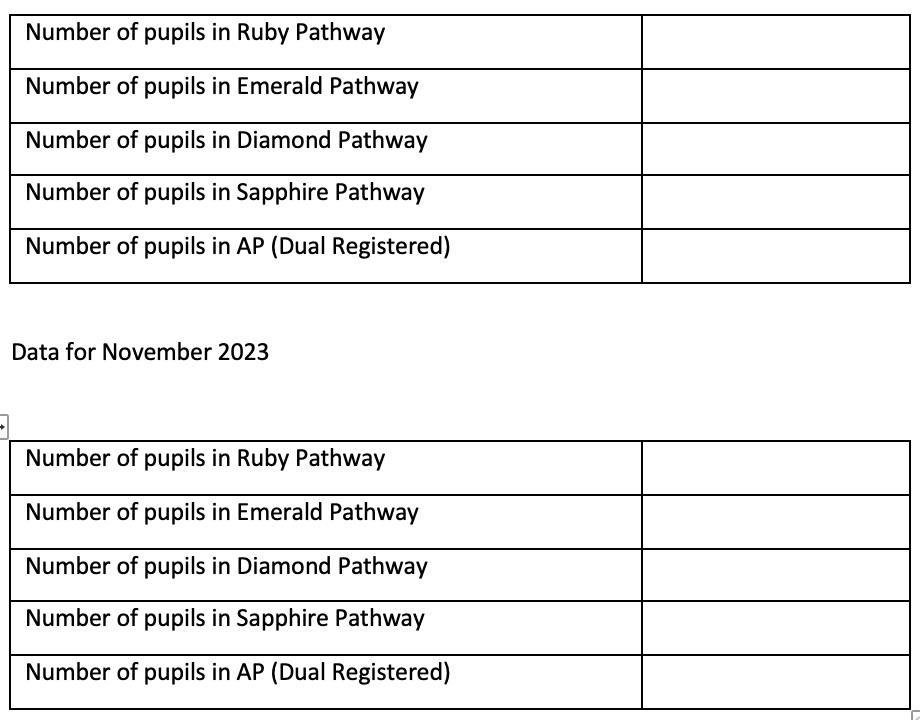
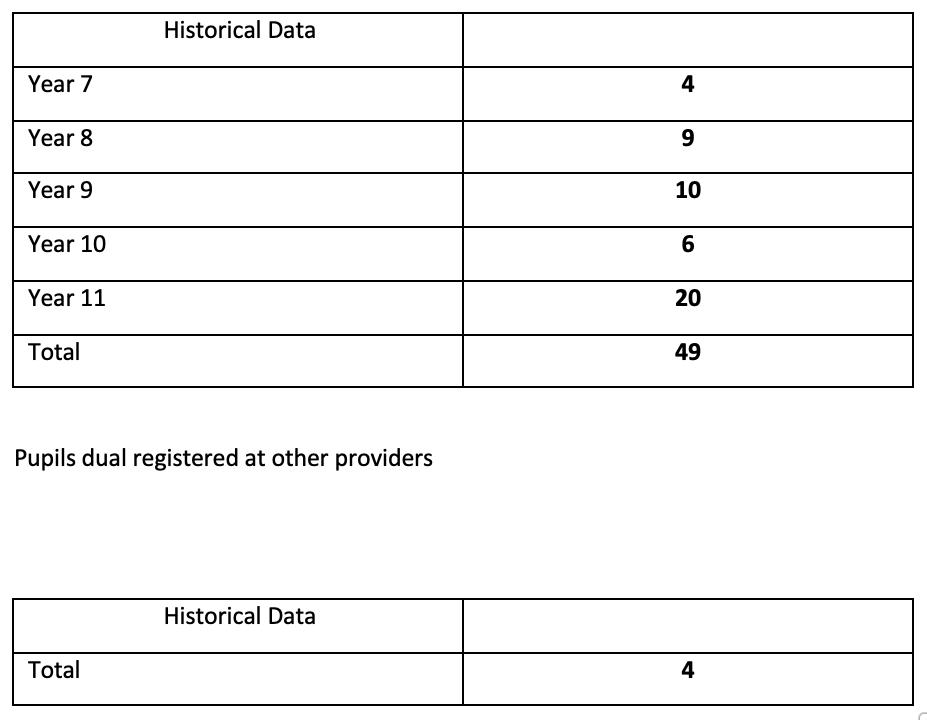
Pupils dual registered at Rise Academy (Current-Term 3)
Autumn Term 1 – 2023
Evidence from Data
Pupils dual registered at Rise Academy
Commentary
• From a high of 77, the use of AP is gradually reducing due to the implementation f An Academy pathway system.
• AP use is projected to reduce at an increased rate form 23/24
• The use of AP is based upon the best pathway to support each student so reductions are based upon the ability to recreate provisions within the Academy.
Success Criteria
Streamline the entry and exit process to internal support programmes including Sapphire, Diamond and Emerald pathways and provide evidence of the impact of the discrete pathway by providing numbers of pupils in each.

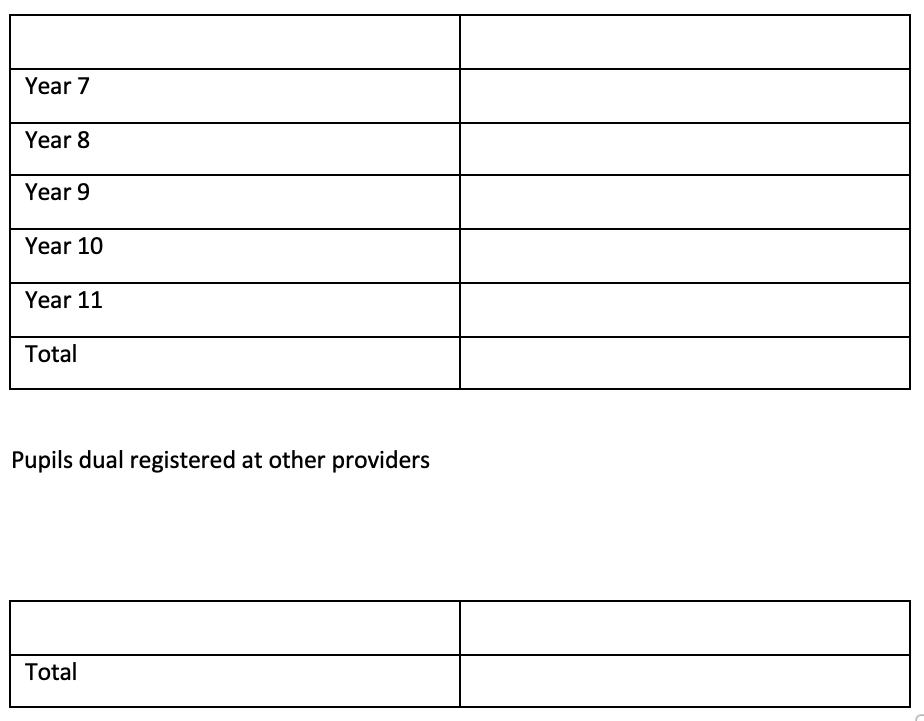
Summer term 2023
Evidence from Data
Data for September 2023
Commentary
• The Academy pathway system is supporting students to remain in mainstream as well as reducing time out through suspensions
• The pathways have supported an overall increase in Academy climate as well as case study evidence highlighting the impact on individual students.
• As per whole Academy, attendance remains the greatest challenge of the pathways.






